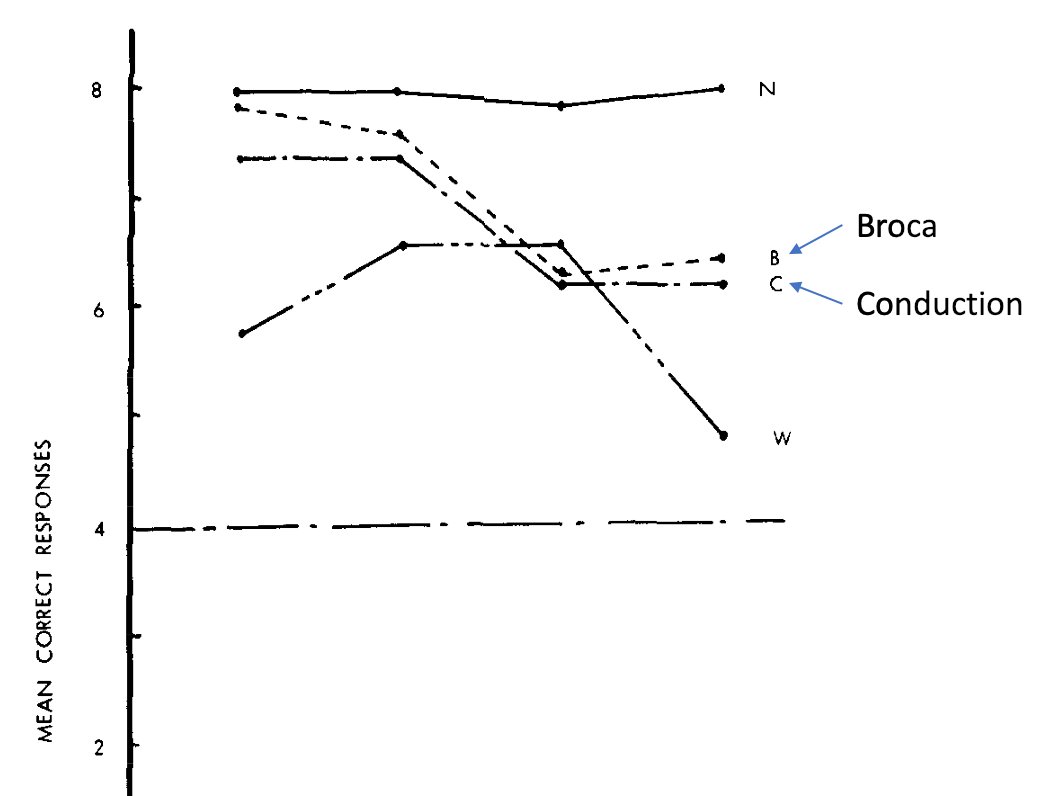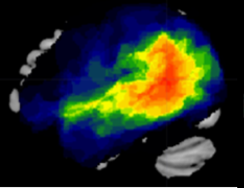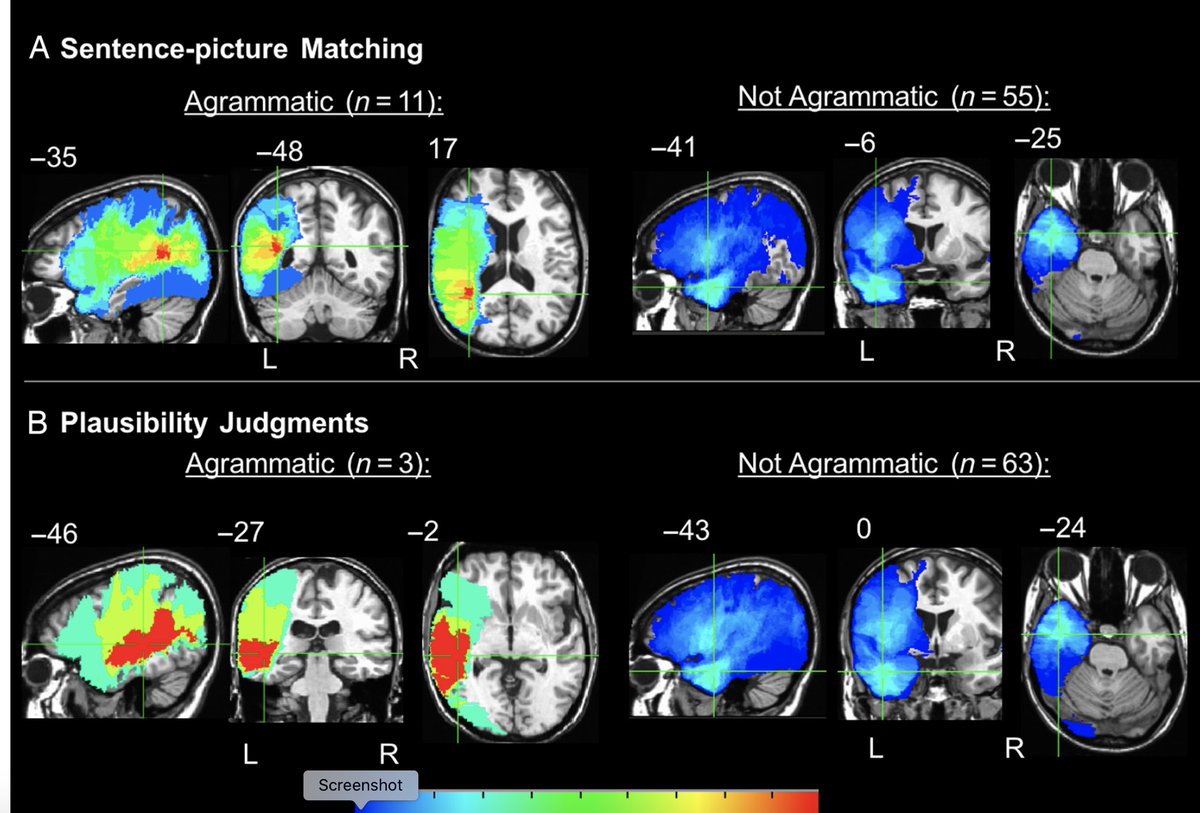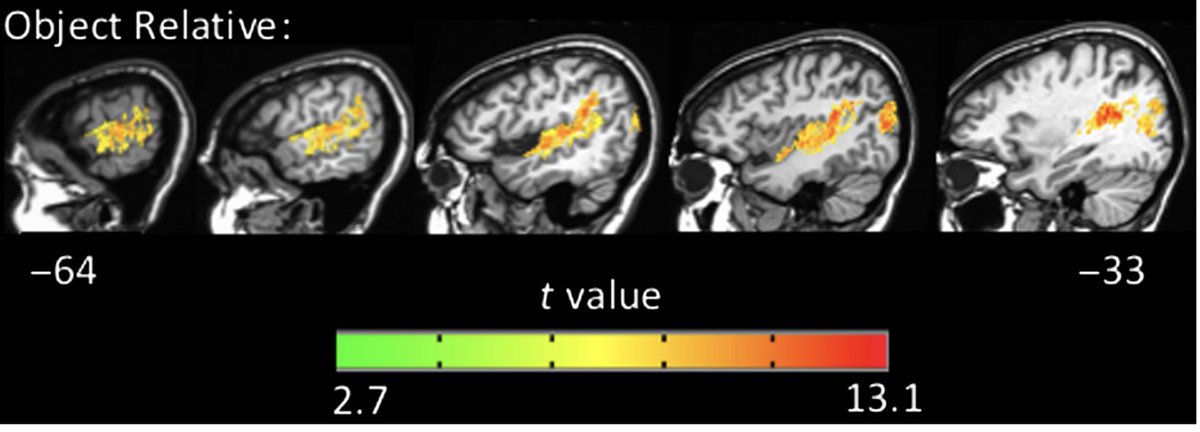The neurolinguistic obsession regarding a link between Broca’s area and receptive syntax is a hangover from faulty inferences made in the 1970s when we had little or no neuroradiological information. 1/n
People with Broca’s aphasia were known to have agrammatism, an apparent syntactic production deficit. Broca’s aphasia was thought to be caused by damage to Broca’s area. So Broca’s area was thought to be the seat of expressive syntax.
In the 70s, it was found that people with agrammatic Broca’s aphasia also have problems comprehending complex sentences like object extracted relative clauses. Thus, Broca’s area = syntax generally, ie for both comprehension and production. https://www.sciencedirect.com/science/article/abs/pii/0093934X76900481">https://www.sciencedirect.com/science/a...
But that paper also found the same pattern in conduction aphasia who are not agrammatic in production, showing (i) a dissociation btw agrammatic production and comprehension & (ii) a lesion pattern not including Broca& #39;s area.
The conduction aphasia result was argued away--quite reasonably at the time, but we know more now--and Broca& #39;s area become the prime candidate for a syntax area.
Today we know that chronic Broca’s aphasia—the people who were studied in the 70s—is associated with damage to BOTH parts of Broca’s area AND parts of Wernicke’s area. You need both regions damaged. https://academic.oup.com/cercor/article/25/12/4689/310110">https://academic.oup.com/cercor/ar...
Thus, posterior damage was part of the story from the start as was the dissociability of syntactic ability for production vs. comprehension, but no one knew it at the time. Many don& #39;t know it still.
As for conduction aphasia, we now know it is not a disconnection syndrome https://pubmed.ncbi.nlm.nih.gov/21256582/ ">https://pubmed.ncbi.nlm.nih.gov/21256582/... and a work-in-progress study in our group suggests more pSTG/STS/MTG (!) involvement than previous work suggested. Teaser image below. Paper in prep.
So the early data that motivated a link between Broca& #39;s area and receptive syntax, in fact points more strongly to posterior regions! If only they had had the lesion data we now have, we wouldn& #39;t be collectively hungover.
Finally, modern, large-scale lesion studies of sentence comprehension, including lesion correlates of agrammatic comprehension and VLSMs of object-extracted sentence comprehension, point directly at the temporal lobe. https://pubmed.ncbi.nlm.nih.gov/29064339/ ">https://pubmed.ncbi.nlm.nih.gov/29064339/...
Thus, the empirical picture from lesion studies is clear. Broca& #39;s area is not the receptive syntax area. The linkage was driven by faulty neuroanatomical information regarding the syndromes under investigation.
So here is our ( @wmatchin) attempt at a sober view of the neurology of syntax that takes modern lesion data into account as well as results from functional imaging and other sources. https://academic.oup.com/cercor/article-abstract/30/3/1481/5588467?redirectedFrom=fulltext">https://academic.oup.com/cercor/ar... END

 Read on Twitter
Read on Twitter






